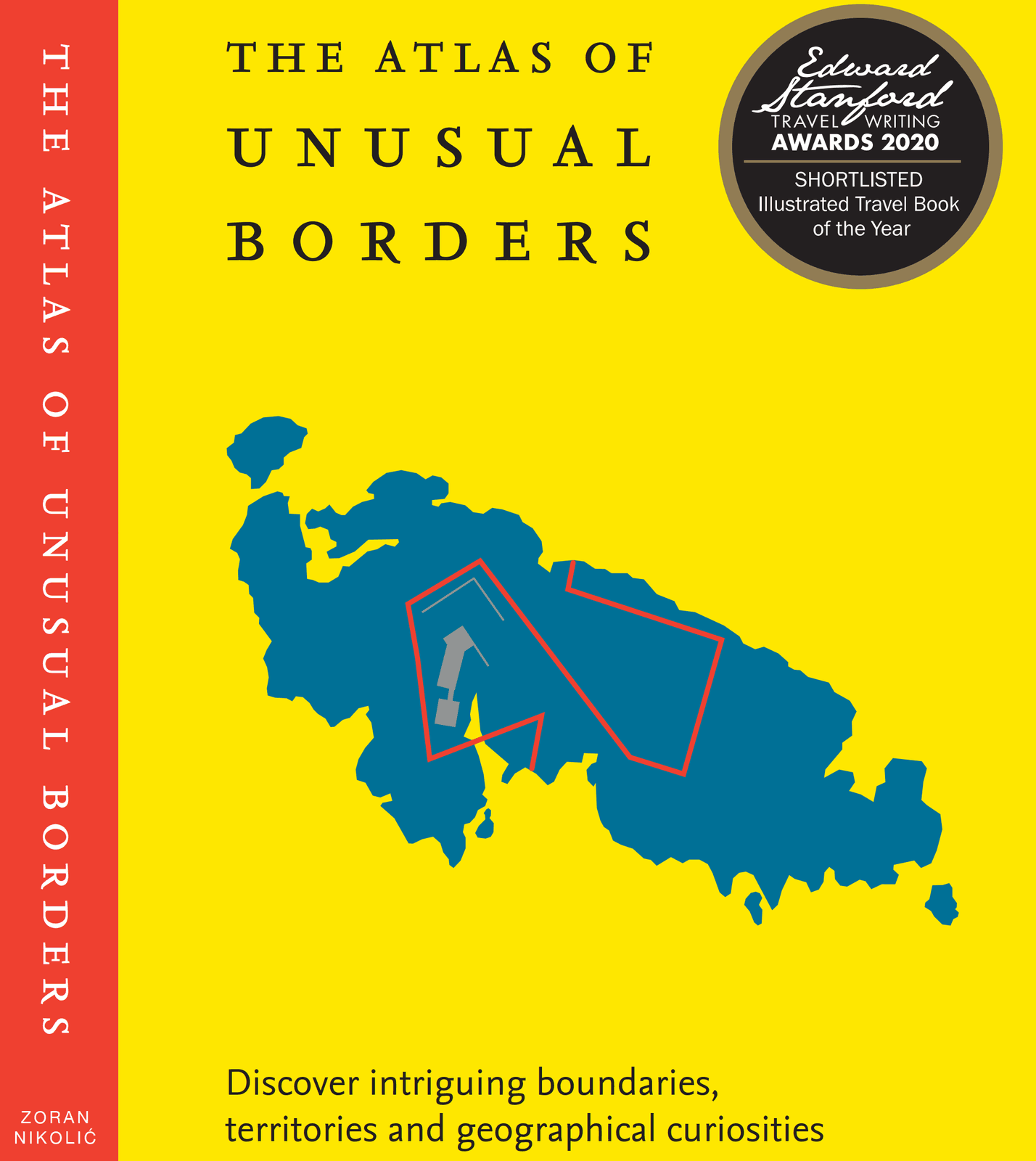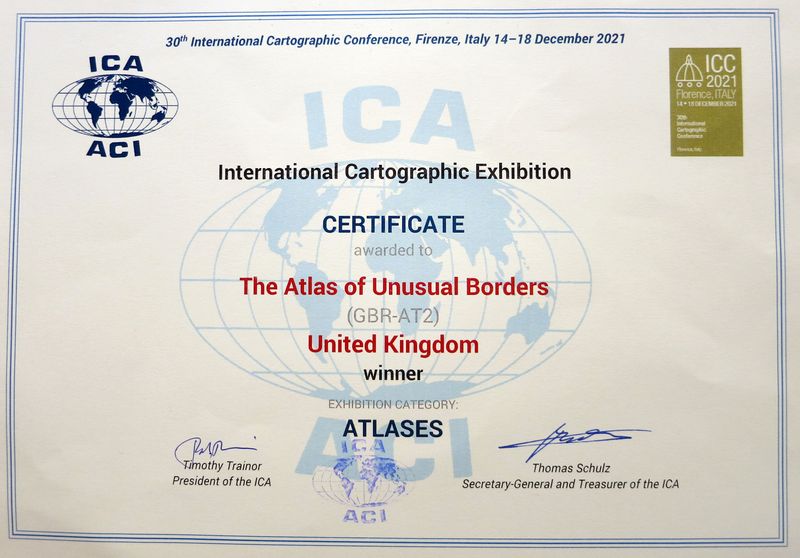The world is not always what we think it is. This book presents unusual borders, enclaves and exclaves, divided or non-existent cities and islands. Numerous conflicts have left countries divided and often shattered. Remnants of countries can by design or accident be left behind as a legal anomaly in this complex world.

Shortlisted for the Edward Stanford Travel Writing Awards 2020
>>> Download sample pages (PDF, 8.5MB) <<<
Most people believe that a country’s borders are clearly defined: just lines that separate countries. Everything on one side of the line belongs to one country and everything on the other side belongs to another country. This might be the case most of the time, but there are unusual exceptions to this unwritten rule.
Examples include:
• Campione d’Italia where Italian residents have to travel 15km through Switzerland to reach the nearest available Italian territory
• Tomb of Suleyman Shah which is a tiny Turkish enclave within Syria which was moved closer to Turkey when Lake Assad was created but still stayed in Syria
• Canadian Stanstead and American Beebe Plain where the boundary line runs along the centre of the main street, so that the houses on one side of the street are in Canada and on the other in the United States
These and many more instances are captured in this fascinating book full of strange geographical intrigue.
When two countries cannot agree on who is entitled to a certain territory, one possible solution is war. However, a less common case is when two countries decide to mutually govern the disputed territory. An example presents Pheasant Island in the Bidasoa River which presents a natural border between France and Spain. According to a peace treaty between these two countries from the second half of the 17th century, Pheasant Island belongs to both France and Spain for alternating periods of six months, which means that the island switched its “nationality” over 700 hundred times in the last 350 years!
Apart from the stated peculiarities, “The Atlas of Unusual Borders” deals with numerous other less usual geographic specificities:
- why one railroad is the reason for the existence of several German enclaves?
- why there are certain areas on our planet that (almost) nobody wants?
- why one of the large world powers decided to give an unusual type of independence to one of its islands, even though the inhabitants of that island do not want any contact with this powerful country?
- how a democratically chosen president of a republic is also the ruler of a constitutional monarchy?
- why one town celebrates the New Year twice within one hour?
- which countries decided to have more than one capital?
More info at HarperCollins & Amazon
Media about AoUB
Big Think – Strange Maps, 10 June 2020
Why are these borders so weird?
NIUS Diario, 31 May 2020 (Spanish)
Vuelven las fronteras, las de enclaves europeos
Times Literary Supplement (TLS), 15 May 2020|No. 6111
In Brief: Borders — link / screenshot
Financial Mail / BusinessLIVE, March-April 2020
link / screenshot
Geographical magazine, December 2019, page 54
The AoUB review
easyJet TRAVELLER, October 2019, Page 33
Borders Are Bonkers
Profit, 1 October 2019 (Bulgarian)
Германският град, който не е в ЕС и други географски куриози
Quotidiano, 30 September 2019 (Italian)
Le frontiere e i confini più curiosi del mondo
MailOnline, 27 September 2019
The world’s most unusual borders revealed
Presentation at British Library (March 2nd 2020)


Presentation at Aye!Write Festival, Glasgow (March 12th 2020, Mitchell Library)

